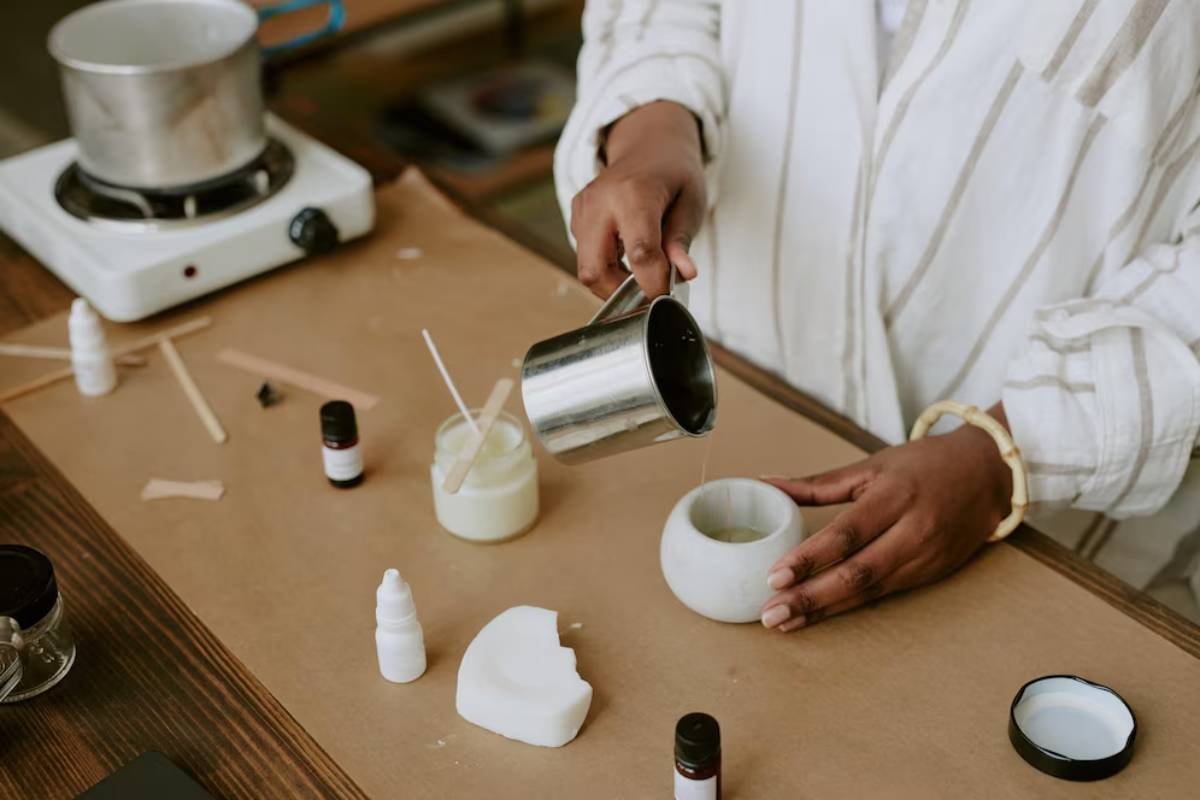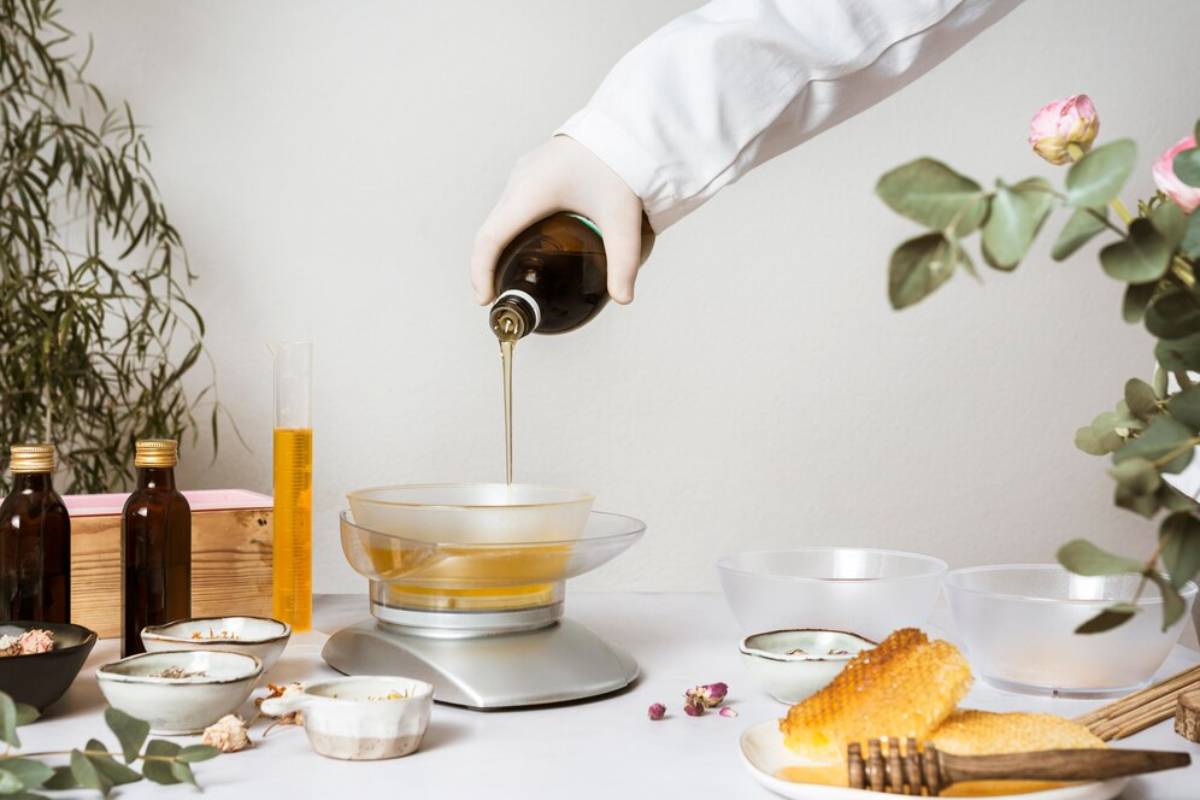
Scent Layering in Candle Making: How to Create Signature Blends
There’s something deeply personal and atmospheric about lighting a candle and being enveloped in a scent that feels just right. Whether it’s comforting vanilla, energising citrus, or grounding cedarwood, fragrance has the power to shape mood, memory, and space. For DIY enthusiasts and scent lovers alike, layered candles offer an exciting way to create multi-dimensional, evolving aromas—right from the comfort of home.
Scent layering, a technique borrowed from the world of perfumery, involves combining complementary fragrances to create complex, bespoke blends. In candle making, it’s not just about mixing oils—it’s about crafting an experience. Done right, custom candle scents can shift subtly from top to base notes as the wax burns, offering a journey through scent in a single flame.
In this guide, we’ll explore the art and science of scent layering, helping you create your own signature blends with practical homemade candle tips—from fragrance theory to pouring techniques.
What Is Scent Layering?
Scent layering in candle making is the process of combining two or more fragrance notes to build a rich, well-rounded aromatic profile. This can be achieved either by blending the scents into a single wax batch or by physically layering different fragrance waxes in segments within one container.
Two Common Approaches:
- Blended Layering: Mixing multiple oils together before pouring a single layer
- Poured Layering: Pouring separate, distinct layers—each with a different scent
Both methods can create beautiful effects, but each offers unique sensory experiences and design considerations.
Understanding Fragrance Notes
To craft harmonious blends, it helps to understand how fragrances are structured—commonly broken down into:
- Top Notes: The initial, most volatile aromas that you notice first (e.g., citrus, mint, eucalyptus)
- Heart (Middle) Notes: The main body of the scent, emerging after top notes fade (e.g., florals, spices, green tea)
- Base Notes: The longest-lasting and richest part of the scent (e.g., sandalwood, amber, musk)
A well-balanced candle includes all three, delivering a smooth transition as it burns. In scent layering, you can experiment with ratios and timing to decide how and when each note reveals itself.
Choosing Complementary Scents

Some fragrance combinations are naturally harmonious, while others may clash or overpower. Here are some tried-and-true pairings to inspire your custom candle scents:
| Base Note | Heart Note | Top Note |
|---|---|---|
| Vanilla | Rose | Bergamot |
| Cedarwood | Lavender | Lemon |
| Patchouli | Jasmine | Orange |
| Amber | Cinnamon | Apple |
| Sandalwood | Neroli | Grapefruit |
Homemade Candle Tip: Start with scent families (e.g., woody, floral, citrus, spicy) and layer across categories for contrast and complexity.
Supplies You’ll Need

Materials:
- Wax (soy, coconut, beeswax, or blends)
- Fragrance oils (preferably essential oils or high-quality candle oils)
- Wick (appropriately sized for your container)
- Heat-safe containers or jars
- Double boiler or wax melter
- Thermometer
- Pouring pitcher
- Stirring stick or spatula
- Scale for measuring fragrance and wax
Optional:
- Colour dye (if you want to visually distinguish layers)
- Labels for scent tracking and personal branding
How to Create Layered Candles: Step-by-Step Guide
Option 1: Blended Layering (One Pour, One Scent Blend)
- Choose Your Notes: Pick one top, one heart, and one base note.
- Create a Blend:
- Base note: 20–30%
- Heart note: 40–60%
- Top note: 20–30%
- Melt Your Wax: Heat to 70–85°C depending on wax type.
- Add Fragrance: Stir in blend at ~65°C.
- Pour into Container: Centre wick, pour slowly.
- Cool and Cure: Let set for 24–48 hours before burning.
Best For: Beginners who want a cohesive fragrance throughout.
Option 2: Poured Layering (Separate Scented Layers)
- Plan Your Layers: Choose 2–4 scent combinations.
- Melt Wax in Batches: One for each layer.
- Add Fragrance and Pour First Layer: Let set 30–60 minutes.
- Repeat for Each Layer: Let cool but remain tacky to bond well.
- Cure Fully: Allow 48+ hours before burning.
Homemade Candle Tip: Use contrasting colours for decoration, or go neutral for elegance.
Safety and Scent Load Tips
1. Measure Your Fragrance Load
Stick to 6–10% fragrance oil relative to wax weight. Overloading can affect burn performance.
2. Use Candle-Safe Fragrance Oils
Not all essential oils or perfumes are heat-safe. Always check flash point and safety ratings.
3. Test Small Batches First
Test cold and hot throw before committing to larger pours.
Troubleshooting Common Scent Layering Issues
Weak Scent Throw?
- Use high-quality oils
- Let candles cure longer
- Blend at optimal temperature
Layer Separation?
- Let layers cool enough to set, but not completely harden
- Score surface of hardened wax to help binding
Overpowering One Note?
- Adjust blend ratios
- Allow full curing to mellow strong top notes
Creative Ideas for Signature Blends
Seasonal Inspiration
- Autumn: Apple + Cinnamon + Clove + Cedarwood
- Winter: Fir + Eucalyptus + Vanilla + Amber
- Spring: Lilac + Neroli + Lemon Zest
- Summer: Coconut + Lime + Sea Salt + Jasmine
Mood-Based Blends
- Calming: Lavender + Chamomile + Sandalwood
- Energising: Orange + Mint + Ginger
- Romantic: Rose + Vanilla + Patchouli
- Earthy: Vetiver + Sage + Oakmoss
Themed Layered Candles
Create candles that evolve from top to base note in layered pours:
- Top Layer: Citrus or floral (lighter and uplifting)
- Middle Layer: Herbal or sweet spice
- Bottom Layer: Woodsy, musky, or gourmand notes
Custom Candle Scents Pro Tip: Keep a scent journal to track blends and how they evolve.
Branding Your Signature Blends (If You’re Selling)
- Name Each Blend Creatively: Evoke a mood, story, or season
- Describe the Scent Journey: Let customers know what to expect
- Use High-Quality Ingredients: Transparency builds trust
- Label Clearly: Include notes, burn time, care tips
Let Your Scent Tell a Story
Scent layering transforms candle making from a simple craft into an expressive art. Whether you’re creating layered candles for personal use, thoughtful gifts, or a blossoming business, understanding the principles of fragrance composition allows you to develop your own custom candle scents with confidence.
Take action today: Choose three oils from your collection, experiment with your first blend, and start crafting your own aromatic story—one layer at a time.